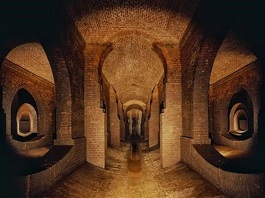
In Brno, the brick water towers and underground "temples" will be fully accessible in the autumn
 |
The area of the water towers is located on Žlutý kopec between the Masaryk Oncology Institute, Tvrdého and Tomešová streets. Only a few smaller technical buildings rise to the surface; otherwise, the area resembles an old orchard. However, hidden underground are vaulted spaces with columns reminiscent of a cathedral. Until 1997, they were full of water, after which they remained unused for a long time.
The oldest water tower was built in 1874, worked on by British specialists. "It stands out for its aesthetic execution and quality of craftsmanship," said Aleš Svoboda, an expert on the underground of Brno. Some time ago, a safe entrance to the water tower was successfully constructed. However, due to safety regulations, a second entrance is still needed for full functionality.
Currently, one can only adventurously descend into the other brick water tower from 1894 through a narrow channel opening, using iron rungs and into complete darkness. After reconstruction, tourists will enter via a staircase. Unlike the oldest space, the second brick water tower has a level floor. According to Oliva, it could host concerts or weddings.
The third and youngest water tower from the early 20th century consists of two concrete tanks with columns, also without a comfortable and safe entrance for now.
Architect David Prudík approaches the reconstruction soberly and with respect. "These are beautiful technical structures. We will clean them, illuminate them, and let them live their own lives," stated Prudík. Nevertheless, one significant change is planned. The historic guard house must be demolished due to compromised statics. In its place, builders will create a new basement level, from which barrier-free corridors will lead to two of the three water towers. The house, part of the heritage-protected area, will then be rebuilt on the same site as a replica.
A new access road, parking lot, and outdoor furniture will also be added. The previously inaccessible water supply area will be transformed into a park on the surface.
The English translation is powered by AI tool. Switch to Czech to view the original text source.
0 comments
add comment
Related articles
0
23.02.2024 | All three water towers on Yellow Hill in Brno will open to visitors on March 22
0
05.09.2022 | Both brick water towers on Yellow Hill in Brno will open to the public in mid-October
0
30.07.2020 | Brno wants to make three water tanks on Yellow Hill accessible within two years
0
20.07.2020 | The first visitors visited the unused water towers in Brno.
0
03.07.2020 | The Brno TIC has taken over the management of the first water reservoir on Yellow Hill






